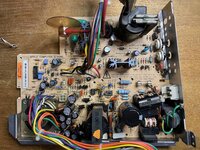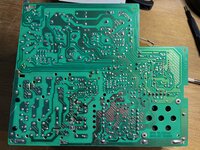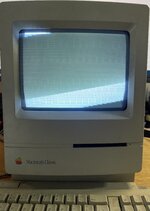Hello everyone,
My beloved Mac Classic used to work until about 10 years ago. It then started to fail booting, with a gray screen. I never looked into it (due to lack of time), but recently decided to try reviving it.
I have started by cleaning and recapping the analog board, and cleaning the logic board (I did not want to recap it yet unless really necessary, as I am not overly confident in my SMC soldering/desoldering skills).
Unfortunately, the Mac just won't do anything when switching power on. No sound, black screen, fan and hard drive are not spinning. I do no see any 5 or 12V on the HDD connector, so I suspect something is wrong with the first stages of the power supply.
I did not test it before recapping, so I do not know if I damaged anything that was all right...
I have tested a few components mentionned in the threads here, such as the RP2 surgistor, or diodes, but could not find any obvious failure.
Could anyone advise on what the next steps for isolating the fault would be?
Thanks !
My beloved Mac Classic used to work until about 10 years ago. It then started to fail booting, with a gray screen. I never looked into it (due to lack of time), but recently decided to try reviving it.
I have started by cleaning and recapping the analog board, and cleaning the logic board (I did not want to recap it yet unless really necessary, as I am not overly confident in my SMC soldering/desoldering skills).
Unfortunately, the Mac just won't do anything when switching power on. No sound, black screen, fan and hard drive are not spinning. I do no see any 5 or 12V on the HDD connector, so I suspect something is wrong with the first stages of the power supply.
I did not test it before recapping, so I do not know if I damaged anything that was all right...
I have tested a few components mentionned in the threads here, such as the RP2 surgistor, or diodes, but could not find any obvious failure.
Could anyone advise on what the next steps for isolating the fault would be?
Thanks !



